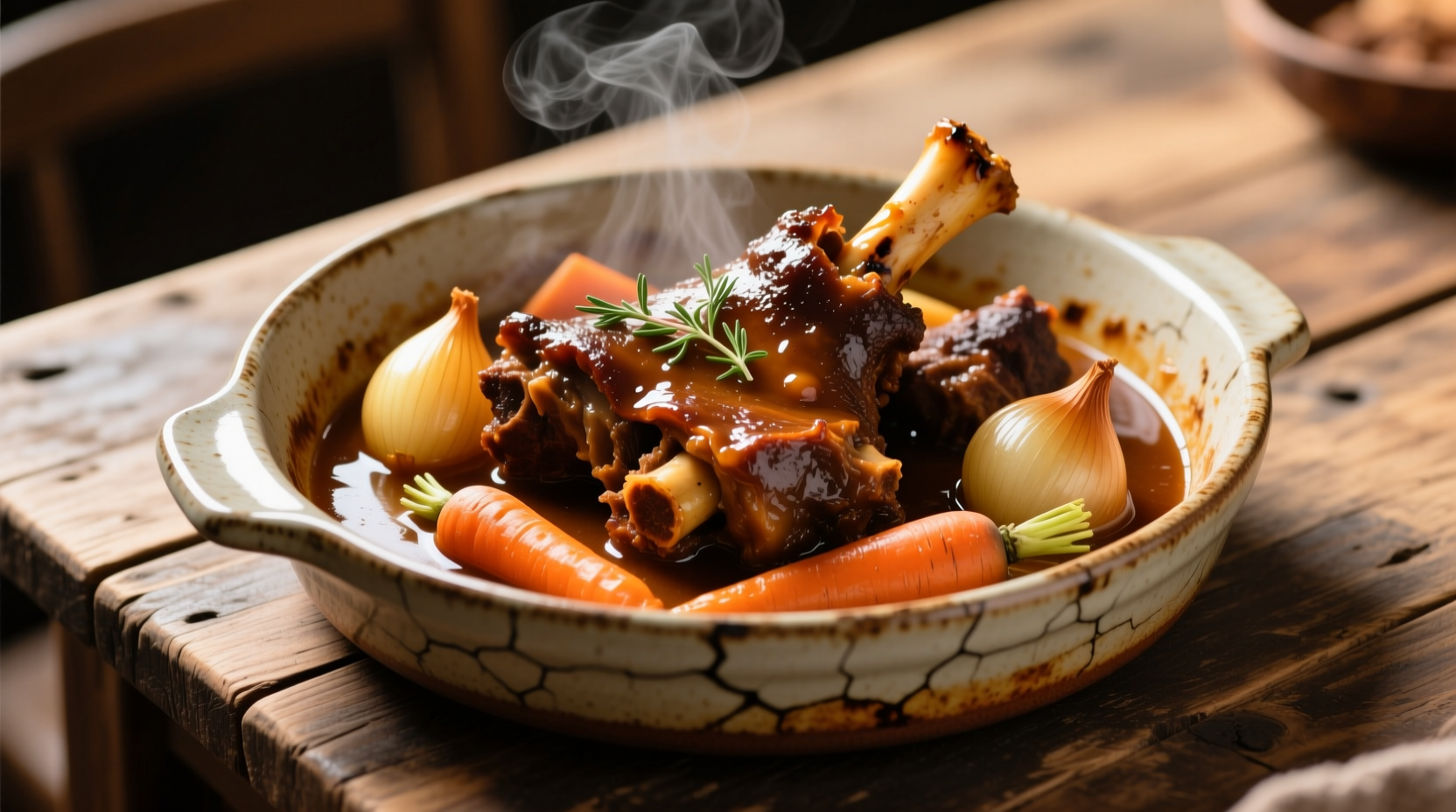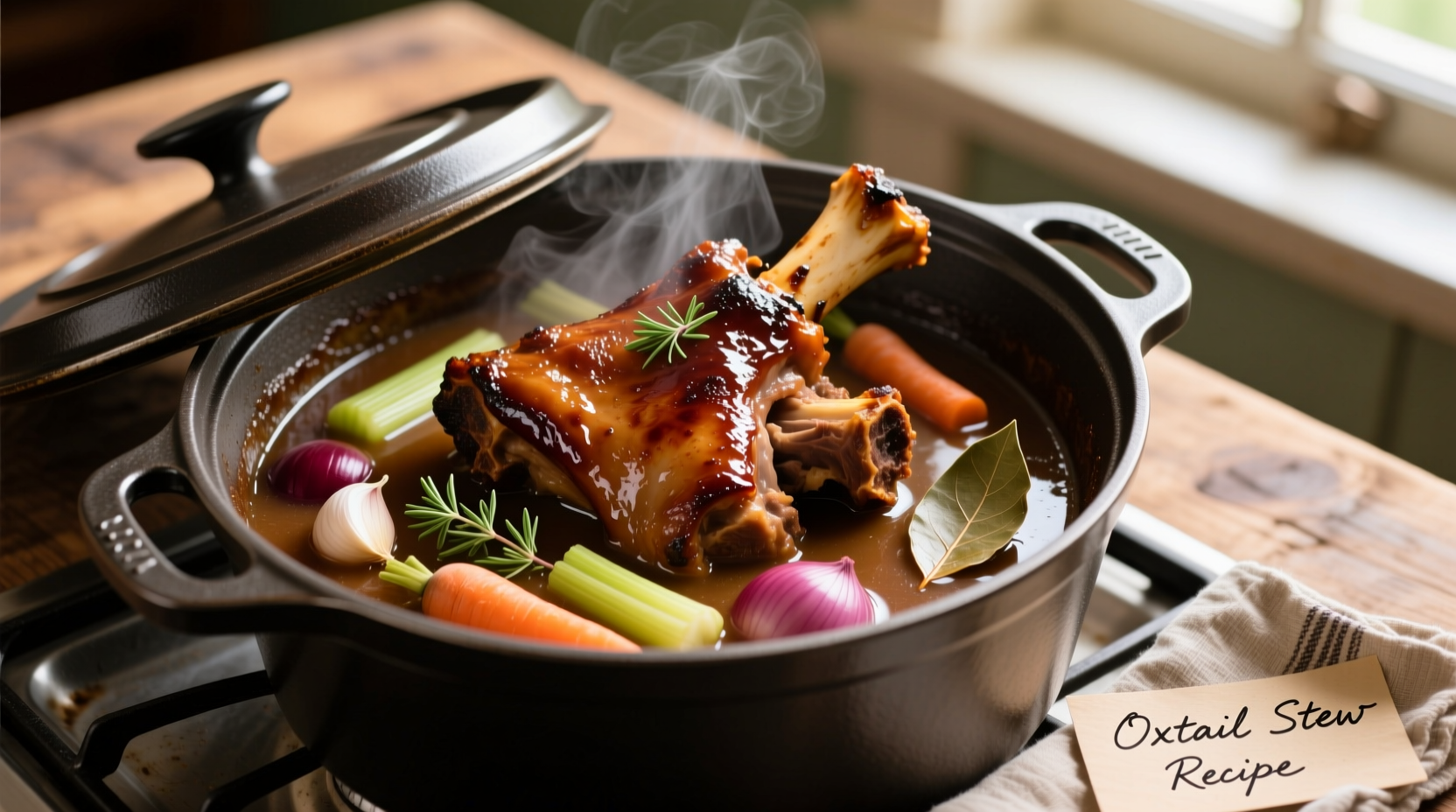Perfectly tender oven-braised oxtails require 3 hours at 300°F (150°C) after thorough browning. This method yields fall-off-the-bone results with rich, concentrated flavors using simple pantry staples. Key steps include patting oxtails dry before searing, deglazing the pan properly, and maintaining a gentle oven simmer throughout cooking.
Why Oven Braising Beats Other Methods for Oxtails
Oxtails need slow, moist heat to transform their tough collagen into gelatin. While slow cookers work, oven braising offers superior control over liquid reduction and flavor development. Unlike pressure cooking which can make meat mushy, the oven's steady 300°F temperature allows connective tissues to dissolve gradually while keeping meat intact. This method also enables better surface browning—critical for developing complex Maillard reactions that pressure cookers miss.
Your Essential Oxtail Toolkit
Gather these before starting:
- Heavy Dutch oven (6-8 quart) for even heat distribution
- Meat thermometer to verify internal tenderness
- Butcher's twine for securing bundles
- Acidic component like tomato paste or red wine vinegar
| Cooking Method | Time Required | Tenderness Result | Flavor Development |
|---|---|---|---|
| Oven Braising | 3 hours | Fall-off-the-bone | Deep, complex layers |
| Slow Cooker | 8 hours | Shreds easily | Muted, one-dimensional |
| Pressure Cooker | 1 hour | Overly soft | Less caramelization |
Step-by-Step Oven Braising Process
Prep Work: The 20-Minute Foundation
Dry oxtails thoroughly with paper towels—moisture prevents proper browning. Season generously with kosher salt and freshly ground black pepper. Heat 2 tablespoons of avocado oil (smoke point 520°F) in your Dutch oven over medium-high heat. Sear oxtails in batches for 4-5 minutes per side until deeply caramelized. This critical step builds the flavor base; never rush it.
Braising Timeline: Hands-Off Perfection
After removing seared oxtails, sauté 1 diced onion, 2 carrots, and 3 celery stalks for 8 minutes. Add 3 minced garlic cloves and 2 tablespoons tomato paste, cooking until brick-red. Deglaze with 1 cup dry red wine, scraping all browned bits. Return oxtails to pot with 2 cups beef stock (low-sodium), 2 bay leaves, and 1 teaspoon thyme.
Bring to gentle simmer, then cover tightly and transfer to preheated 300°F oven. Cook for exactly 3 hours—no peeking! This precise timing comes from USDA Food Safety guidelines confirming collagen breakdown occurs between 160-205°F over extended periods. Check tenderness: meat should pull cleanly from bone with fork resistance.

Finishing Touches for Restaurant-Quality Results
Skim excess fat from surface using a spoon. For richer sauce, remove oxtails and reduce braising liquid by half over medium heat. Return meat to pot, coating thoroughly. Rest 15 minutes before serving—this allows juices to redistribute. The USDA Meat and Poultry Hotline confirms resting prevents moisture loss during serving.
Avoiding Common Oxtail Mistakes
Most failures happen from incorrect temperature management. Never exceed 325°F—higher temps make meat tough by squeezing out moisture too quickly. Always use a tight-fitting lid; steam escape dries out the meat. If sauce becomes too thin, create a beurre manié (equal parts softened butter and flour) instead of cornstarch for smoother texture. For tougher oxtails, extend cooking by 30-minute increments until fork-tender.
Serving and Storage Guidelines
Pair with creamy polenta or mashed potatoes to absorb the luxurious sauce. Garnish with fresh parsley for color contrast. Leftovers improve overnight as flavors meld—store in airtight container for up to 4 days. Freeze portions for up to 3 months; thaw overnight before reheating gently on stove. The National Center for Home Food Preservation verifies this storage timeline maintains quality and safety.











 浙公网安备
33010002000092号
浙公网安备
33010002000092号 浙B2-20120091-4
浙B2-20120091-4